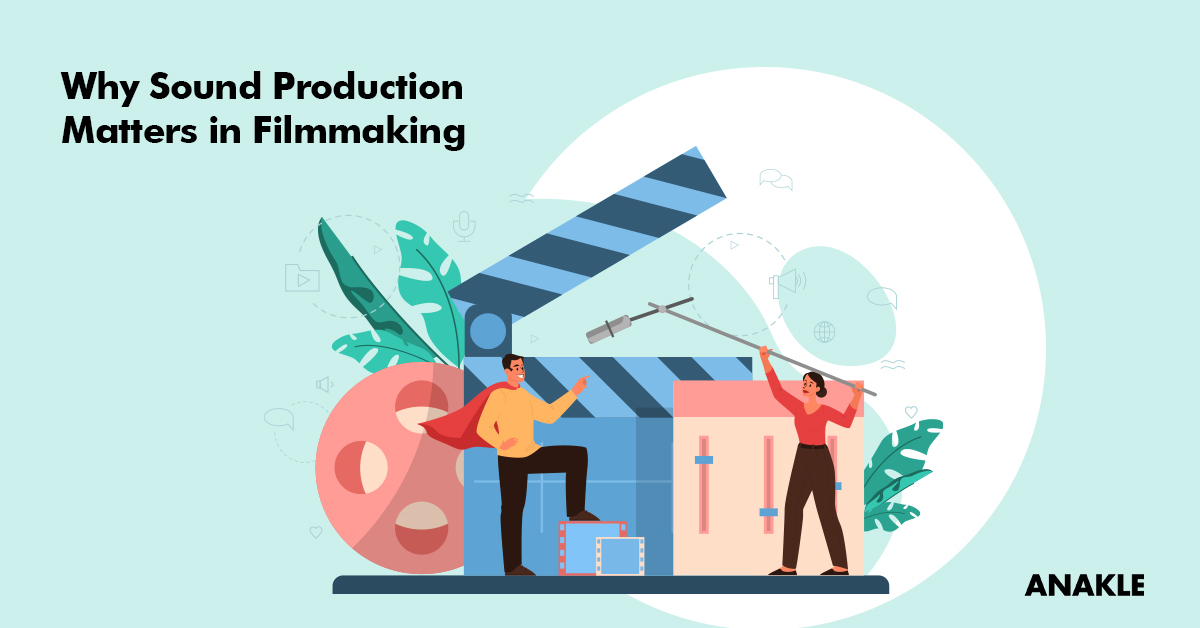Imagine yourself seated comfortably in the movie theatre chomping on your popcorn as you anxiously wait for the movie to begin. You look around you and the excitement in the air is almost palpable. Finally, the movie begins, but it has a poor sound quality. The characters are talking but you can barely make out what they’re saying. The car chase is not intense and you don’t flinch when the killer appears suddenly. The movie just doesn’t feel real, rather quite flat and all shades of boring.
In essence, poor sound can ruin an otherwise spectacular production. Modern movies are using sound in new and exciting ways that push the envelope on how filmmakers tell their stories. While the characters, location, costume and other production factors add to the visual aesthetics of a film, it is the sound that brings it to life.
Diegetic and non-diegetic sound
Sound in a film can be broken down into diegetic and non-diegetic. These words sound all fancy but have pretty simple meanings. Non-diegetic sounds are added for effect during the editing process. In a nutshell, if the characters can’t hear it, it’s non-diegetic. Some examples are character narration, soundtrack or music overlay, and sound effects outside of the film world.
Diegetic sounds are the natural sounds of the film world that are audible to the audience and the characters. These can range from environmental noises, dialogue between characters and sound coming from objects in the scene.
What does sound bring to a film?
- Shapes the emotions of the audience: Sound in film is powerful enough to shape the emotions of the audience even more than words and pictures. It adds another layer of intrigue and awe that creates a mood and makes the story more impactful and memorable. In a movie, a scene of a person running can either be perceived as the beginning of a spectacular adventure or signal an imminent danger and this is attributed to the sound that accompanies it. If the movie is horror, for example, the film sound becomes eerie and the audience becomes tense and on edge.
- It creates a semblance of reality: In Sci-Fi movies such as Avatar, which takes place in settings that we can’t experience, ambient sound adds a touch of reality to the story. By adding sound effects to a scene, filmmakers provide context that supports what is on screen and helps a viewer’s brain connect what it sees with what it hears. This allows them to immerse themselves in the story. For example, to really sell the idea of a large crew on a ship at sea, sounds such as boots on wood, a gush of wind and distant conversations brings the idea to life.
- Drives home non-verbal storytelling: As humans, we can hear a sound or see an image and understand a variety of meanings or suggestions. In a movie scene, certain sounds denote certain things. For example, when you hear a rush of wind or a chaotic and loud noise in the sky, it can signal an impending storm. NetFlix’s Bird Box is a great example of how sound effects can tell the story of a scene far more acutely than a few lines of dialogue.
- It increases production value: No matter how brilliant the script or any other element of the film is, if the sound is poor, nobody will take it seriously. The right music track and sound effects can bring your film to life better than any lighting plot or line of dialogue. Sound accounts for a large percentage of the viewing experience because of its ability to set an emotional tone for a scene.
- Amplifies the genre: Sound can also be a recurring element, particularly in terms of music appropriate to a particular genre. The sound effects and music used in a Sci-Fi movie are different from the ones used in an adventure movie and so on.
- Provides a form of continuity: Aside from the above-mentioned functions, sound can provide a form of continuity or connective tissue for films. For instance, if sound remains constant before and after a picture cut, this indicates to the audience that while the point of view may have changed, the scene has not shifted – it is still the same.
From the chilling sound effects and witty dialogue between characters to the atmospheric music, our favourite films just wouldn’t be the same had they been made in the silent era. Hence, the introduction of sound in filmmaking was perhaps the most dramatic advancement in the history of movies.

